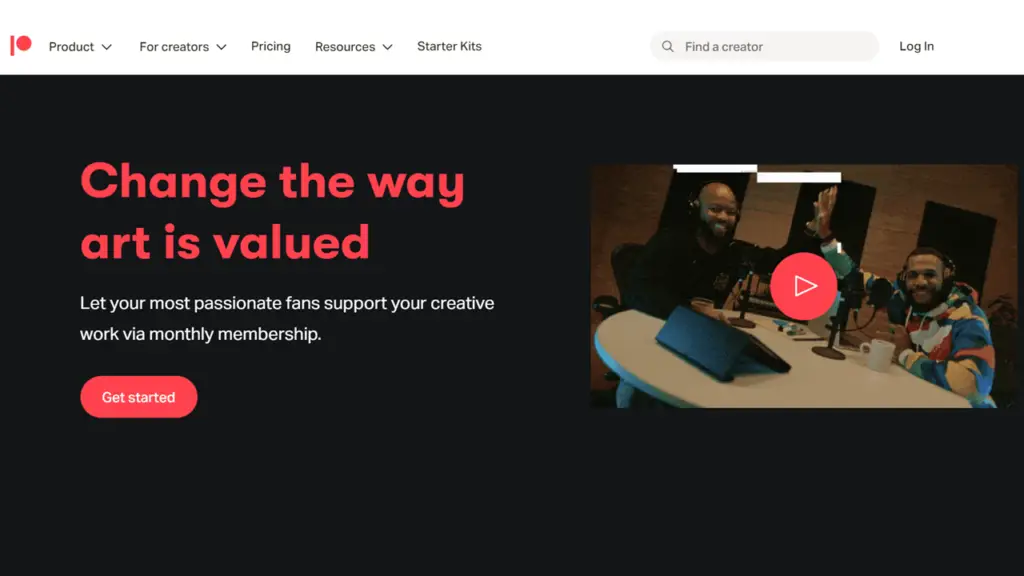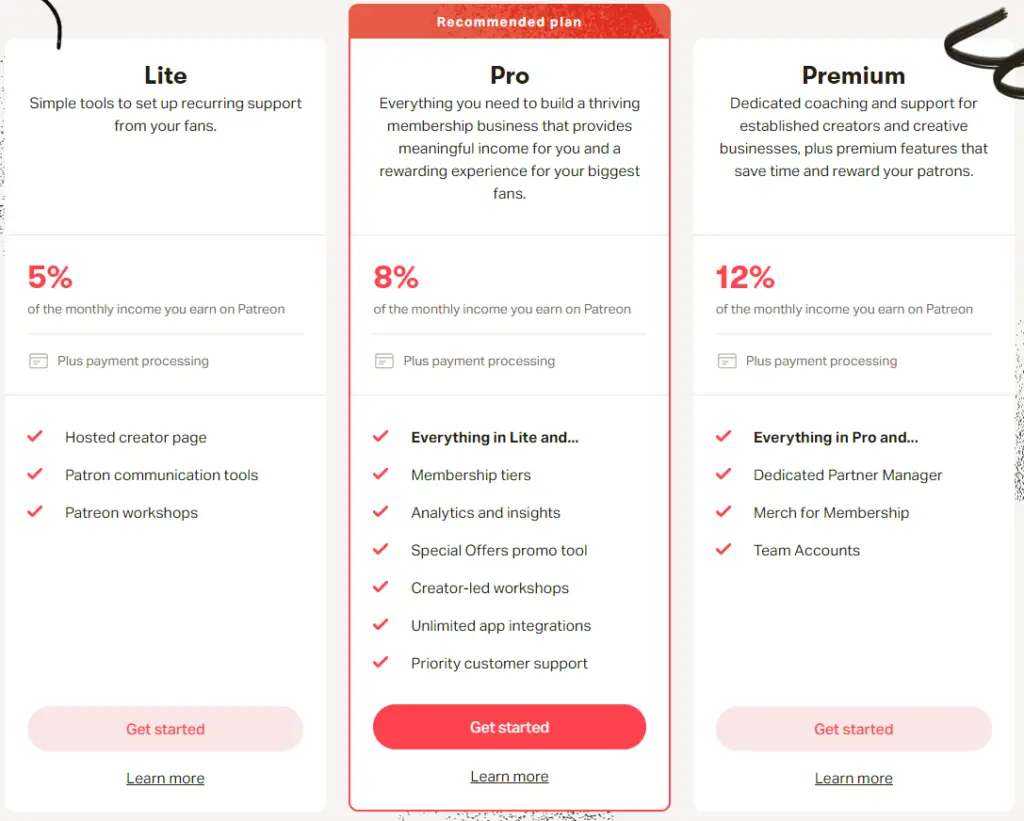
What is Patreon?
Patreon is an American membership platform that provides business tools for content creators. Through this platform, the company enables creators to run a subscription service. Artists can use it to earn a monthly income in exchange for rewards and other perks. The subscribers provide a monthly fee to subscribe to their favourite content creators. Patreon is one of the most prominent platforms for artists, writers, YouTubers, musicians and other creators.
Patreon started its operations in 2012 through Jack Conte and Sam Yam. They were roommates when getting their education at Stanford University. However, they did not have a similar path to reaching Patreon. Sam continued his education at Stanford and pursued a master’s degree in Computer Science. Subsequently, he became a part of the social-mapping startup Loopt.
Before that, he also confounded AdWhirl. This platform allowed mobile developers to serve ads and distribute their apps through different channels. However, AdMob later acquired it, which later got purchased by Google. With this background, Yam earned some net worth and allowed him to venture into other businesses. He also worked in Dogpatch Labs. Later, he also came up with an online marketplace for freelance photographers named OurSpot.
While Yam was venturing into these businesses, Conte was working elsewhere. He was studying Music studies at Stanford and later became a musician. He also started a band named Pomplamoose. Together with his girlfriend, they rose to fame through several platforms. Despite receiving offers from various labels, they stayed independent. However, they did not make a significant income through their music.
Due to the lack of earnings from his career, Conte came up with an idea for a platform. He reached out to his old roommate Yam to help him with the technical aspects. After working out the details, they decided to form a platform, now known as Patreon. In 2013, they launched Patreon to the public and received $700,000 in seed funds. These funds came from Yam’s connections with other entrepreneurs.
By 2014, Patreon added more funds to their operations through fundings. The platform received those funds through its user base. By then, the company had grown, which allowed it to raise finance effortlessly. The platform also focused on serving creators and provided them with several tools. With these, creators could assess their performance with their subscribers.
Patreon kept growing its base over the years. However, it also went through some issues. For example, in 2017, it garnered criticism due to a new fee structure. Despite that, the company has survived and grown into a well-known name in the market. Today, the platform has over 3 million active users. Similarly, it has amassed over 200,000 creators. The company itself owns four offices around the globe with more than 300 employees.
How does Patreon work?
Using Patreon is straightforward for both users and creators. Creators can set up pages for subscription payments from users, known as patrons. In exchange, they can offer some perks and incentives. Based on those tiers, donors can pledge specific sums of money. However, the platform does not dictate how creators offer these tiers. Instead, creators control these features.
Content creators must follow several steps to start using Patreon. The first step within this process is to create a Patreon account. This process is straightforward. Users can use their Google or Facebook accounts to sign up to the platform. Alternatively, they can create an account through their email address as well. Once they register with the platform, they can start using its tools.
Subsequently, content creators must set their profiles up to personalize their accounts. While this process is not compulsory, users must do so. This process allows users to attract more users by providing details of their content. Usually, content creators must add a profile photo to their profile and create an about me section. These can be crucial in attracting new patrons.
Once users set up their profile, they must create membership tiers. These tiers are essential in allowing users to donate and subscribe to a content creator. Consequently, they must also include their tier descriptions with each package. This process belongs to users and how they utilize it to gain subscribers. However, they can get inspiration from other similar creators.
Eventually, users will start attracting patrons. Some content creators also use other platforms to promote their Patreon accounts. In most cases, it includes getting YouTube subscribers to their Patreon profile. Once these users find a creator, they can subscribe to their tier plans. In exchange for their donations, they can get the perks offered by the content creator.
What is the Patreon business model?
Patreon uses an e-commerce business model to offer its platform. Through this platform, Patreon allows customer-to-consumer connections. It is also known as the C2C business model. Essentially, Patreon connects customers with consumers. In this relationship, the company provides a platform to connect. However, it does not dictate how the customers and consumers interact.
Patreon also uses a commission-based business model. As mentioned, content creators offer various tiers. For each subscription plan, the content creator receives a sum of money from the patrons. Patreon, in this exchange, charges a commission from the creator. This commission fee is a fixed percentage. However, it increases the revenues as the patrons pay more for higher plans.
Patreon depends on content creators to make money. If they do not provide quality content to attract consumers, the platform can’t generate revenues. Essentially, users pay for the content that creators offer. The content creators also promote the platform and attract more users to it. Consequently, Patreon also makes money when the number of Patrons on the platform.
For Patreon, its platform is the primary source of revenue. However, it does not provide any products or services to consumers directly. Instead, it uses user content to attract users. In essence, the customers create the content which the consumers consume. Therefore, Patreon also uses a user-content business model. With this model, the company makes money from the materials posted by its customers.
Overall, Patreon uses various business models to make money. The company essentially operates in the e-commerce industry and uses the C2C model. On top of that, it also depends on the commission-based and user-content business models. With these, the company makes money through its customers. However, it also requires its platform to strive to generate more revenues.
How does Patreon make money?
Patreon primarily makes money from its content creators that use the platform. The company has several plans from which these creators can choose. Based on this plan, the company charges different fees. However, it also provides several features limited to that specific plan. Overall, Patreon makes money in the following ways.
Plans
Patreon offers three plans, which come with several features. However, these plans do not make money directly. Instead, they dictate how much content creators will pay the company when they receive donations in the future. The subscription plans also provide other features, which can be helpful for some creators. Currently, the three subscription plans offered by Patreon include the following.

Commissions
Based on the plans, Patreon charges commissions on fees from its content creators. These commissions may include 5%, 8% or 12% fees. Based on it, Patreon can receive higher fees when users pay for higher-tier plans. These commissions fall under the company’s creative subscription fee. As mentioned, they apply to every transaction.
Processing fees
Apart from the above commissions, Patreon also charges a processing fee. Like the above, these fees also apply to every transaction. The company charges a 5% fee on every transaction to process it. On top of that, it also includes 10 cents fixed charge. However, it only applies to payments below $3. The fees are a 2.9% fee and 30 cents charge for transactions above $3.
Conclusion
Patreon is a membership platform that allows users to receive subscription fees. The company has garnered significant attention due to its services over the years. Overall, getting started on this platform is relatively straightforward. Its primary users include content creators and patrons. Patreon’s business model consists of various revenues streams. Based on these streams, the company makes money from its content creators.

